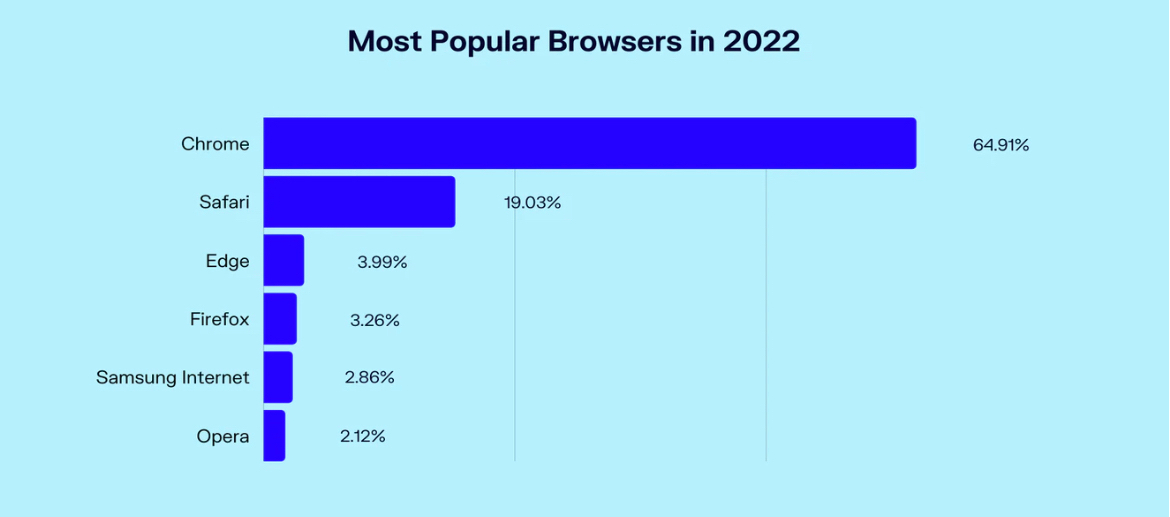
This image comes from one of the many marketing companies that monitor browser usage across the internet. Where I love that we are here? For folks that made strides in the industry in the 2010’s? We took a beating to get here.
Here are some plain facts about this - but would love to hear you add any thoughts.
- Chrome used to be called a consumer browser. Some may still say that. But two out of the three most popular used browsers are based on Chromium today.
- Safari is still based on WebKit…and is popular because of the Apple brand and those millions of iPhones that are out there.
- At least in my industry folks are still consuming eLearning today more at their desktops with a little less that 6% consuming from their phones.
- The death of Adobe flash left scars on many in our industry with a full EOL in late 2020 (honestly browsers were moving us earlier away from supporting flash based eLearning).. But it has been a breath of fresh air to be working with HTML 5 as a ubiquitous format for browsers today.
- Love it or hate it? If your content is not responsive today? You are behind the times.
- There have been a few “brain farts” done with the adjustment of some important things in browsers…how many remember your auto start videos not starting one day and then the next they did? How about eLearning modules writing to certain file storage modules in your modern browser all of a sudden not doing that anymore?
- Firefox was probably the most flexible and forgiving for web developers to work with. That may even be true to this day (someone is going to throw an egg at me), but that also does not mean it has nearly the lions share of Chrome…
- Both Chrome and Firefox get funky with memory leaks often (which can cease up your entire workstation’s experience). I want to say this feels true more with Firefox…but that is purely anecdotal evidence.
There are some great “boutique browsers” today helping to serve a niche…but we predominantly QA and test our learning solutions in Chrome and Edge with Firefox almost always being tested as a third…
Let’s hear some more facts about the environment we cater to our audiences in.






